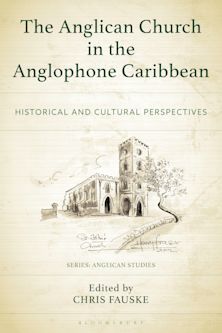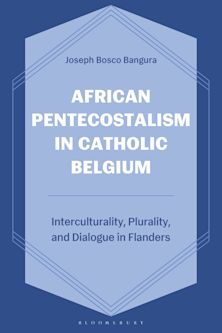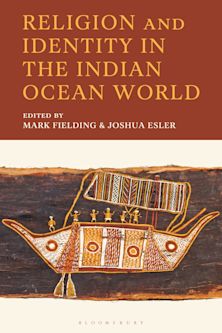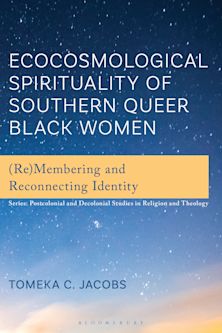- Home
- ACADEMIC
- Religious Studies
- Religious Studies - Other
- Dancing Bodies of Devotion
This product is usually dispatched within 3 days
- Delivery and returns info
-
Free CA delivery on orders $40 or over
You must sign in to add this item to your wishlist. Please sign in or create an account
Description
Dancing Bodies of Devotion: Fluid Gestures in Bharata Natyam examines how Bharata Natyam, a traditionally Hindu storytelling dance form, moves across religious boundaries through both incorporating choreography on Buddhist, Christian, Muslim, and Jain themes and the pluralistic identities of participants. Dancers traverse religious boundaries by reformulating an aesthetic foundation based on performative rather than solely textual understandings of rasa, conventionally defined as a formula for how to physically craft emotion on stage. Through the ethnographic case studies of this volume, dancers of Bharata Natyam innovatively demonstrate how the rasa of devotion (bhakti rasa), surprisingly absent from classic dance-related texts, serves as the pivotal framework for expanding on their own interreligious thematic and interpretive possibilities. In contemporary Bharata Natyam, bhakti rasa is not just about enhancing religious experience; instead, these dancers choreographically adapt various religious identities and ideas in order to emphasize pluralistic cultural and ethical dimensions in their work. Through the dancing body, multiple religious and secular interpretations fluidly co-exist.
Table of Contents
Chapter 1: Rasa: A Taste of the Divine
Chapter 2: Balasaraswati and Krishna Ni Begane Baro
Chapter 3: Francis Barboza and Christian Themes
Conclusion: Bhakti Rasa: A Re-Personalized Aesthetic of Devotion
Part II: Cultural Bodies
Chapter 4: Rasa and Bhakti as Indian Categories
Chapter 5: Dhananjayans’ Sanghamitra
Chapter 6: Kalai Kaviri’s Gayatri Mantra
Conclusion: Is there an Indian way of dancing devotion?
Part III: Ethical Bodies
Chapter 7: Na?ya as Visual Education and the Ethics of Rasa
Chapter 8: Dhananjayans’ Stree (Woman)
Chapter 9: Monica Cooley’s Subhasitam: Morality Tales of India and Bhagavad Gita Sabdam
Conclusion: An Ethics of Bhakti Rasa: Performance of a Moral Mood
Part IV: Pluralistic Bodies
Chapter 10: Unity and Multiplicity of Rasa
Chapter 11: Malini Srinivasan and Sufi Qawwali
Chapter 12: Tehreema Mitha and Ratt Jaga (The Vigil)
Conclusion: Revisiting “Unity in Diversity”
Conclusion
Glossary
Illustrated Glossary of Gestures
Product details
| Published | Apr 27 2016 |
|---|---|
| Format | Paperback |
| Edition | 1st |
| Extent | 270 |
| ISBN | 9780739195840 |
| Imprint | Lexington Books |
| Illustrations | 11 b/w photos |
| Dimensions | 228 x 152 mm |
| Series | Studies in Body and Religion |
| Publisher | Bloomsbury Publishing |
About the contributors
Reviews
-
Zubko argues for Bhakti rasa (aesthetic flavor of devotion) in the classical Indian dance form bharata natyam, and suggests, through ethnographic examples, that there are multiple ways of embodying and communicating this devotional mood. The author's expertise in dance (as well as religion) is evident, and she points out how a dance associated with Hinduism is, in fact, also used to communicate non-Hindu--but definitively Indian--ideas and emotions. For nonexperts, the glossaries of terms and gestures will be useful and necessary. . . .For connoisseurs of this dance form, dance descriptions provide an opportunity to experience the rasa without seeing (or perhaps by imagining) the performance. . . .[The author] includes vignettes of her research experiences. She moves from one of bharata natyam's most celebrated exponents, Balasaraswati, to the much less-known Tehreema Mitha, categorizing performances as primarily devotional, educational, or cultural. In a final section she discusses what she calls 'performed pluralism,' echoing arguments about India's 'unity in diversity' and 'the one and the many.' Summing Up: Recommended. Upper-division undergraduates and above; professionals.
Choice Reviews
-
Not only does Dancing Bodies of Devotion deal with performative art—bharata natyam, an Indian dance form—but it is also a tour de force in itself. In this theoretically and methodologically sophisticated presentation, Zubko contributes a genuinely novel composition to the study of Indian religions, performance studies, aesthetics, and interreligious engagement. . . . Throughout this text, Zubko demonstrates her mastery of texts, theory, and technical detail. Her overviews of the construction of both rasa and bharata natyam are exemplary.
Journal of Hindu-Christian Studies
-
Dancing Bodies of Devotion offers a deep investigation of the embodied aesthetics of Bharata Natyam and an extensive exploration of its interpretive qualities, from Hindu devotional aesthetics to inter-religious experiences in differing geographical contexts by different practitioners.
Pallabi Chakravorty, Swarthmore College
-
Original, thoughtful, and nuanced, Dancing Bodies of Devotion examines religious plurality in contemporary Bharata Natyam. Drawing on a wealth of research, Zubko paints an image of both bhakti and Bharata Natyam as dynamic and inclusive. This important study shows us that bhakti retains its progressive potential in the modern world and opens up the dance to a multiplicity of religious expressions. Detailed yet broad in scope, this text is a welcome addition to the literature in South Asian studies, dance studies, and religious studies.
Janet O'Shea, University of California Los Angeles


































